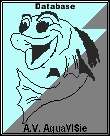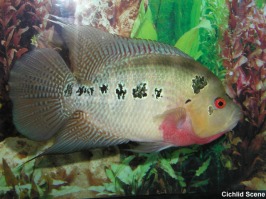 |
Cichlasoma trimaculatum |
 |
||||||||||||||||||||||
|
|
|
|
||||||||||||||||||||||
| Explanation of the symbols | ||||||||||||||||||||||||
|
|
|
|||||||||||||||||||||||
|
||||||||||||||||||||||||
|
This is one of the most aggressive cichlids that exist.
They need a lot of free swimming space and they have a very
large territory. The aquarium should be set up with
stones, driftwood and roots that make hiding places.
You can keep them together with other large fishes such as
catfish. Plants cannot be used for decoration, because
they are eaten. A powerful filter is necessary. They are omnivorous. A large part of the food should be vegetable such as spinach and lettuce. Breeding is very easy. You should use young animals for breeding. More than 1000 eggs are laid and fertilized on a flat stone. The female cares for the eggs and the male defends the territory. After 3 days the eggs hatch. The parents move the larvae to a breeding pit. Another 4 days later the young fishes are swimming free. Both parents now care for them. You can raise them with baby brine shrimp. |
||||||||||||||||||||||||
|
|
||||||||||||||||||||||||
|
Cichlid Scene |
||||||||||||||||||||||||
 |
||||||||||||||||||||||||
|
Copyright ©AV AquaVISie. All rights reserved. |
||||||||||||||||||||||||
